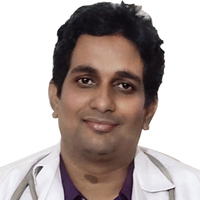Opitron Plus Capsules For Male Climax Intensity (60) Information
Opitron Plus Capsules is an ayurvedic medicine that is primarily used for the treatment of Premature Ejaculation, Low Sexual Vitality, Testosterone Deficiency and Low Libido in Men. Secondary and off-label uses of Opitron Plus Capsules have also been mentioned below. The key ingredients of Opitron Plus Capsules are Gokshura, Jasmine, L-Arginine, L-Leucine, Vitamin E, L-Carnitine, Pine nuts (Chilgoza) and Maca. The properties of which have been shared below. The correct dosage of Opitron Plus Capsules depends on the patient's age, gender, and medical history. This information has been provided in detail in the dosage section.
It facilitates the absorption of blood flow to the cavernous body of the penis which leads to an increase in erection size and improves the blood flow in the body & increases the absorption of the cavernous body of the penis. Due to the dilation of the penis cavity, the erectile tissues swell.
Ingredients of Opitron Plus Capsules
| Gokshura |
|
| Jasmine |
|
| Palash |
|
| Hapusha |
|
| L-Arginine |
|
| L-Leucine |
|
| Vitamin E |
|
| L-Carnitine |
|
| Pine nuts (Chilgoza) |
|
| Maca |
|
Opitron Plus Capsules Benefits
Opitron Plus Capsules is used to treat the following -
Main Benefits
Other Benefits
Opitron Plus Capsules Dosage
This is the usual dosage recommended in most common treatment cases. Please remember that every patient and their case is different, so the dosage can be different based on the disease, route of administration, patient's age and medical history.
| Age Group | Dosage |
| Adult |
|
Opitron Plus Capsules For Male Climax Intensity (60) Side Effects
No side effects of Opitron Plus Capsules have been reported in the medical literature. However, you should always consult your doctor before using Opitron Plus Capsules.
This medicine data has been created by -

BAMS, Gastroenterology, Dermatology, Psychiatry, Ayurveda, Sexology, Diabetology
10 Years of Experience
References
Ministry of Health and Family Welfare. Department of Ayush: Government of India. Volume- I. Ghaziabad, India: Pharmacopoeia Commission for Indian Medicine & Homoeopathy; 1999: Page No 49-52
Ministry of Health and Family Welfare. Department of ISM & H: Government of India. [link]. Volume- III. Ghaziabad, India: Pharmacopoeia Commission for Indian Medicine & Homoeopathy; 2001: Page No 71-72
Ministry of Health and Family Welfare. Department of Ayush: Government of India. [link]. Volume 2. Ghaziabad, India: Pharmacopoeia Commission for Indian Medicine & Homoeopathy; 1999: Page No 136-138
Ministry of Health and Family Welfare. Department of Ayush: Government of India. [link]. Volume 4. Ghaziabad, India: Pharmacopoeia Commission for Indian Medicine & Homoeopathy; 2004: Page No 88-94
Ministry of Health and Family Welfare. Department of Ayush: Government of India. [link]. Volume 5. Ghaziabad, India: Pharmacopoeia Commission for Indian Medicine & Homoeopathy; 2006: Page No 146-151
C.K. Kokate ,A.P. Purohit, S.B. Gokhale. [link]. Forty Seventh Edition. Pune, India: Nirali Prakashan; 2012: Page No 7.11